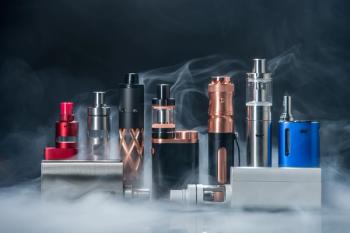
X-ray emission induced by charged particles, also known as particle-induced X-ray emission (PIXE), is a powerful analytical technique for the elemental and chemical characterization of materials.


X-ray emission induced by charged particles, also known as particle-induced X-ray emission (PIXE), is a powerful analytical technique for the elemental and chemical characterization of materials.

Spectroscopy's laureate series will highlight the lives and careers of some of the most influential vibrational and atomic spectroscopists.

In a recent study, researchers introduced several analytical techniques, such as ESI-MS, RP-HPLC, and ICP-MS, to separate and detect various technetium species.

This year’s conference included 12 tracks with sessions highlighting everything from mail security to art analysis and AI.

In a recent study, collaborative spectroscopic methods, such as LIBS-Raman, were used for detecting and combatting heavy metal lead contamination in wheat seedlings, revealing critical insights for food security and human health.

At SciX2023, Maria Montes-Bayón received the Lester W. Strock Award from the New England Society for Applied Spectroscopy. Here’s a summary of the award session.

A new sample introduction method improves ICP-OES for ultratrace element analysis. An explanation of how this ICP-OES compares to ICP-MS analysis is also provided.

A recent study explains how laser-induced breakdown spectroscopy (LIBS) is better suited for rapidly quantifying heavy metals in plastics than traditional methods such as inductively couple plasma–mass spectrometry (ICP-MS) and atomic absorption spectroscopy (AAS).

A recent study shows how the LIBS approach can be used to measure the magnetic field near the surface of plasma-facing components (PFCs).

Researchers say the developed methodology, which reconciles the different intensities of neutral and singly-ionized argon species, may be further refined and applied to optical emission spectroscopy (OES) of other rare gas plasma.

Researchers introduce a new method for accurately determining nitrite concentration beyond the linear range, utilizing UV-visible absorption spectra and correlated component regression (CCR).

In a recent review article published in Spectrochimica Acta Part B: Atomic Spectroscopy, authors evaluate the progress atomic spectroscopy has made in heavy metal isotope analysis

Researchers have developed a small and cost-efficient picoliter droplet printing device capable of accurately depositing 65 different elements for micro preparation.

A team of researchers has developed a greener and simplified method for determining elemental contaminants and metal catalyst residues in carbon nanotubes (CNTs) using ICP-OES.

Minimizing sample preparation issues requires users to consider method LODs as well as high purity polymer materials for sample collection and preparation. Here, we examine proper personal analytical practices one can take to avoid environmental contamination.

A new study presents significant improvements in the online-laser ablation of solids in liquids (online-LASIL) technique for quantitative analysis of trace elements in technological materials.

Researchers have compared two types of bismuth atomic lamps for atomic fluorescence spectrometry (AFS) and found that the electrodeless discharge lamp (EDL) exhibited significantly higher sensitivity and lower detection limits compared to the boosted discharge hollow cathode lamp (Superlamp).

Researchers have developed advanced laser-induced breakdown spectroscopy (LIBS) methods for rapid element quantification in alloy particles, aiding in the efficient analysis and identification of their source materials.

Scientists have introduced a statistical definition of the limit of detection (LOD) for calibration-free laser-induced breakdown spectroscopy (CF-LIBS). The study provides a robust framework for LOD determination, addressing the high LOD associated with LIBS and enabling more accurate trace element analysis.

This study addresses crucial factors often overlooked in the literature and provides guidelines for improving the accuracy and interpretation of temperature measurements in plasma diagnostics.

A simple and inexpensive method for the determination of hexavalent chromium in aqueous solutions was developed using liquid-liquid microextraction combined with total reflection X-ray fluorescence spectrometry.

Good sample handling practices that minimize sample contamination during preparation of inorganic analyses are discussed, using glass and low purity quartz as examples.

Our annual review of new products for atomic and molecular spectroscopy, including details by category and highlights of overarching trends.

A new article reviews methods for determining trace elements in germanium and germanium dioxide, highlighting the advantages and limitations of methods with and without matrix separation procedures.

New research compares light capturing approaches in LIBS for multichannel spectrometers, highlighting the challenges of shot-to-shot variations in plasma morphology and their effect on calibration-free LIBS.